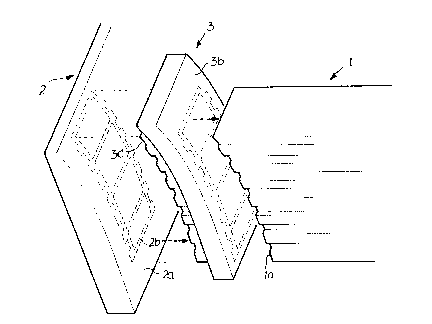Some of the information on this Web page has been provided by external sources. The Government of Canada is not responsible for the accuracy, reliability or currency of the information supplied by external sources. Users wishing to rely upon this information should consult directly with the source of the information. Content provided by external sources is not subject to official languages, privacy and accessibility requirements.
Any discrepancies in the text and image of the Claims and Abstract are due to differing posting times. Text of the Claims and Abstract are posted:
| (12) Patent: | (11) CA 2016054 |
|---|---|
| (54) English Title: | PROCESS FOR WELDING PROFILES, IN PARTICULAR PLASTIC PROFILES |
| (54) French Title: | PROCEDE DE SOUDAGE DE PROFILES, PARTICULIEREMENT DE PROFILES EN PLASTIQUE |
| Status: | Expired and beyond the Period of Reversal |
| (51) International Patent Classification (IPC): |
|
|---|---|
| (72) Inventors : |
|
| (73) Owners : |
|
| (71) Applicants : |
|
| (74) Agent: | SMART & BIGGAR LP |
| (74) Associate agent: | |
| (45) Issued: | 1999-08-03 |
| (22) Filed Date: | 1990-05-04 |
| (41) Open to Public Inspection: | 1990-11-05 |
| Examination requested: | 1997-02-25 |
| Availability of licence: | N/A |
| Dedicated to the Public: | N/A |
| (25) Language of filing: | English |
| Patent Cooperation Treaty (PCT): | No |
|---|
| (30) Application Priority Data: | ||||||
|---|---|---|---|---|---|---|
|
There is described a process for welding profiles, in
particular plastic profiles as used for windows, doors, or the
like. The two profile areas that are to be welded together are
heated to welding temperature and then joined together after
this heating process. When this is done, the face surface of
the first profile and the surface of the second profile,
transverse thereto, is heated. The heating of the second profile
is confined to a surface area which, according to position and
configuration, matches the face surface of the first profile.
The profiling of the surface of the second profile matches at
least in part the face surface profiling of the first profile.
Using this process, it is possible to weld variously shaped
profiles, in particular plastic profiles, tightly to each other.
Note: Claims are shown in the official language in which they were submitted.
Note: Descriptions are shown in the official language in which they were submitted.

2024-08-01:As part of the Next Generation Patents (NGP) transition, the Canadian Patents Database (CPD) now contains a more detailed Event History, which replicates the Event Log of our new back-office solution.
Please note that "Inactive:" events refers to events no longer in use in our new back-office solution.
For a clearer understanding of the status of the application/patent presented on this page, the site Disclaimer , as well as the definitions for Patent , Event History , Maintenance Fee and Payment History should be consulted.
| Description | Date |
|---|---|
| Time Limit for Reversal Expired | 2001-05-04 |
| Letter Sent | 2000-05-04 |
| Grant by Issuance | 1999-08-03 |
| Inactive: Cover page published | 1999-08-02 |
| Inactive: Final fee received | 1999-04-21 |
| Pre-grant | 1999-04-21 |
| Notice of Allowance is Issued | 1998-12-18 |
| Notice of Allowance is Issued | 1998-12-18 |
| Letter Sent | 1998-12-18 |
| Inactive: Status info is complete as of Log entry date | 1998-12-14 |
| Inactive: Application prosecuted on TS as of Log entry date | 1998-12-14 |
| Inactive: Approved for allowance (AFA) | 1998-11-04 |
| Deemed Abandoned - Failure to Respond to Maintenance Fee Notice | 1997-05-05 |
| Inactive: Adhoc Request Documented | 1997-05-05 |
| Request for Examination Requirements Determined Compliant | 1997-02-25 |
| All Requirements for Examination Determined Compliant | 1997-02-25 |
| Application Published (Open to Public Inspection) | 1990-11-05 |
| Abandonment Date | Reason | Reinstatement Date |
|---|---|---|
| 1997-05-05 |
The last payment was received on 1999-04-07
Note : If the full payment has not been received on or before the date indicated, a further fee may be required which may be one of the following
Please refer to the CIPO Patent Fees web page to see all current fee amounts.
| Fee Type | Anniversary Year | Due Date | Paid Date |
|---|---|---|---|
| MF (application, 8th anniv.) - standard | 08 | 1998-05-04 | 1998-02-17 |
| MF (application, 9th anniv.) - standard | 09 | 1999-05-04 | 1999-04-07 |
| Final fee - standard | 1999-04-21 |
Note: Records showing the ownership history in alphabetical order.
| Current Owners on Record |
|---|
| BRUGMANN FRISOPLAST GMBH |
| Past Owners on Record |
|---|
| WOLF-JURGEN BRICKENSTEIN |